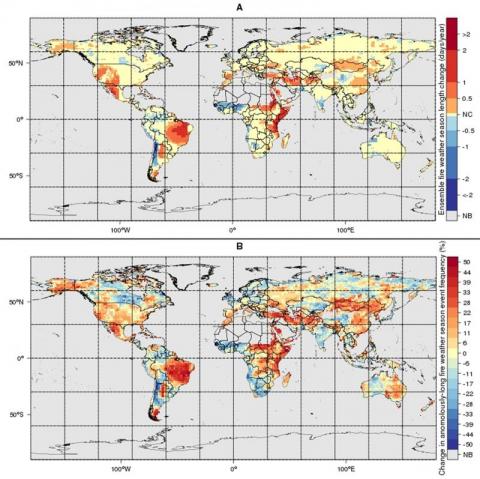Wildfires occur at the intersection of dry weather, available fuel, and ignition sources. Weather is the most variable and largest driver of regional burned area. Temperature, relative humidity, precipitation, and wind speed independently influence wildland fire spread rates and intensities. The alignment of multiple weather extremes, such as the co-occurrence of hot, dry, and windy conditions, leads to the most severe fires. Global temperatures have increased by ~ 0.2°C per decade over the last three decades, possibly leading to an acceleration of the global water cycle with more intense rainfall events and more severe and widespread droughts and regional humidity variations. Although climatic changes are implicated in global fire variations, a comprehensive assessment of the interactions of recent climatic changes that lead to an expansion or contraction of the fire season is lacking.
In a NASA-funded study, RMRS Research Ecologist Matt Jolly, in collaboration with researchers from South Dakota State University, the University of Tasmania, the Desert Research Institute, and the United States Forest Service Region 1 (Northern Region), used global climate data from three reanalysis platforms and three different fire danger rating systems to explore the relationships between recent climatic changes and global fire weather season length.
The study found that fire weather seasons have lengthened across 27.8M km2 (23.8%) of the Earth’s vegetated land surface, resulting in a 16.3% increase in global mean fire weather season length. They also showed a near doubling (90.7%) of global burnable area affected by anomalously long fire weather seasons (>1.0 σ above historical mean) and an increased frequency of long fire weather seasons across 62.4M km2 (53.4%) of the globe’s vegetated areas during the second half of the study period. If coupled with ignition sources and available fuel, these fire weather conditions may profoundly alter global pyrogeography, and they may have pronounced global socio-economic, ecological and climate impacts.
